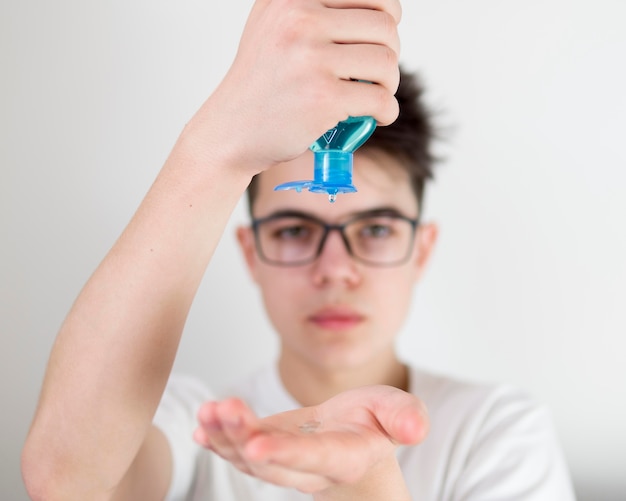
### Allergic Conjunctivitis: Understanding Pink Eye
Allergic conjunctivitis occurs when your eyes come into contact with allergens—substances that trigger an overreaction of the immune system. This results in sore, painful, and inflamed eyes. The immune system releases histamine and other substances, causing blood vessels in the eyes to expand. This leads to irritation, tear production, and that all-too-familiar discomfort. Unlike infectious conjunctivitis, allergic conjunctivitis is not caused by bacteria or viruses.
—
### Causes and Types of Allergic Conjunctivitis
**Common Allergens:**
– Pollen (from hay fever)
– Animal fur
– Eye drops
– Makeup
– Dust mites
**Types of Allergic Conjunctivitis:**
1. **Seasonal Allergic Conjunctivitis**
This type, also known as allergic rhinoconjunctivitis, often flares up during spring and summer when plants are pollinating. It’s commonly linked to hay fever, which comes with sneezing, a runny or blocked nose, and watery, itchy eyes. Some people may continue experiencing symptoms into early fall depending on the pollen count.
2. **Contact Conjunctivitis**
Also called contact dermato-conjunctivitis, this happens when cosmetics, eye drops, or other chemicals irritate sensitive eyes. Symptoms, like redness and discomfort, may take up to 2–4 days to appear after exposure.
3. **Giant Papillary Conjunctivitis**
This type is associated with contact lenses. People sensitive to contact lenses may experience redness and discomfort, especially if hygiene practices are poor. It can also occur after certain eye surgeries that require the use of hard contact lenses.
4. **Perennial Allergic Conjunctivitis**
Unlike seasonal conjunctivitis, this lasts all year and is usually caused by indoor allergens like dust mites and animal dander. Dust mites thrive in warm, humid environments like bedding, furniture, and carpets. Symptoms may not be as intense as seasonal allergies but persist throughout the year.
—
### Symptoms of Allergic Conjunctivitis
Symptoms usually affect both eyes and appear within 2–4 days after exposure to an allergen. Common signs include:
– Red or pink eyes
– Itching and irritation
– Pain in one or both eyes
– Sensitivity to light (photophobia)
– Swollen eyelids
– Soreness
– Watery discharge and burning sensation
Some types of allergic conjunctivitis, like vernal keratoconjunctivitis, can lead to significant mucus production, aversion to light, and a sensation of having something stuck in the eye. Atopic keratoconjunctivitis, seen in older adults with allergic dermatitis, can cause similar symptoms and lead to scarring of the cornea if untreated.
**Eye Allergy Triggers:**
– **Outdoor allergens:** Pollen from grass, trees, and weeds
– **Indoor allergens:** Pet dander, dust mites, mold
– **Irritants:** Cigarette smoke, perfumes, and pollution
—
### Managing and Treating Allergic Conjunctivitis
The first step in managing allergic conjunctivitis is avoiding the allergens responsible. Here’s a quick guide:
**For Outdoor Allergens:**
– Stay indoors during high pollen counts.
– Avoid using window fans.
– Wear sunglasses or protective eyewear to block pollen.
– Refrain from rubbing your eyes, as it can worsen symptoms.
**For Indoor Allergens:**
– Keep windows closed.
– Use mattress and pillow covers that are mite-proof.
– Wash bedding frequently in hot water (at least 130°F).
– Keep the humidity in your home low to prevent mold growth using a dehumidifier.
– Clean floors with a damp mop instead of dry sweeping.
– Wash hands thoroughly after handling pets.
—
### Treatment Options
1. **Over-the-Counter (OTC) and Prescription Eye Drops:**
– **Artificial tears:** These help wash away allergens and keep eyes moist. For added relief, you can refrigerate these drops before use.
– **Decongestant drops:** Reduce redness by narrowing blood vessels in the eyes. However, overusing them can lead to worsening symptoms, so consult a doctor.
– **Antihistamine drops:** Help control itchiness and swelling.
– **Mast cell stabilizers:** Prevent histamine release, addressing the root cause of allergies.
2. **Oral Medications:**
– Antihistamines can provide relief from redness, swelling, and itchiness.
3. **Other Medications:**
– Nonsteroidal anti-inflammatory drugs (NSAIDs): Reduce itching but may cause a mild burning sensation initially.
– Corticosteroid eye drops: Effective for severe or long-term symptoms but need to be used under medical supervision.
4. **Immunotherapy:**
– Allergy shots can gradually build immunity to allergens, providing long-term benefits.
—
### Prevention Tips
– Avoid wearing contact lenses until symptoms clear up.
– Rinse eyes with clean water to soothe irritation.
– Resist the urge to rub your eyes.
– Keep personal items, like towels, clean and avoid sharing them with others.
– Frequently wash hands and sanitize surfaces around the house.
– Always follow your eye doctor’s advice for contact lens care.
– Wear swim goggles to protect your eyes in pools, and avoid sharing eye makeup with others.
—
### Why Early Treatment Matters
Untreated allergic conjunctivitis can lead to complications, including impaired vision and damage to the eye. By addressing this condition early and following proper prevention strategies, you can protect your eyes from long-term damage and maintain good eye health.